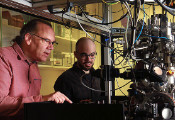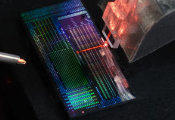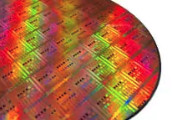New Measurement Technique Unveiled for Thermal Hall Effect in Quantum Materials
Berlin, Germany, January 18, 2024 -- Researchers at the Helmholtz-Zentrum Berlin (HZB) have made a significant leap in the field of quantum materials by developing a novel measurement method that accurately detects minuscule temperature differences in the thermal Hall effect. This groundbreaking technique, capable of measuring temperature variations as small as 100 microkelvin, overcomes previous challenges posed by thermal noise, marking a pivotal moment in the study of quantum materials.
The thermal Hall effect, a key phenomenon in condensed matter physics, involves tiny transverse temperature differences arising when a thermal current is applied through a material in the presence of a perpendicular magnetic field. This effect is crucial for identifying exotic states in condensed matter, as it allows scientists to distinguish between conventional behavior and exotic excitations. The meticulous measurement of this effect is particularly important in materials like spin liquids, spin ice, and high-temperature superconductors.
Despite its significance, accurately measuring these temperature differences, which typically range from microkelvins to millikelvins in millimeter-sized samples, has been a formidable challenge. The intrusion of heat from measurement electronics and sensors has historically masked the thermal Hall effect, hindering precise detection.
The team, led by PD Dr. Klaus Habicht, in collaboration with specialists from the HZB sample environment, has made a landmark achievement in this domain. They introduced a novel sample rod with a modular structure, compatible with various cryomagnets, and implemented capacitive thermometry for measuring the thermal Hall effect. This innovative method, which exploits the temperature dependence of the capacitance in specially manufactured miniature capacitors, has dramatically reduced heat transfer from sensors and electronics. The result is a significant attenuation of interference signals and noise.
To validate their method, the team analyzed terbium titanate, a well-known quantum material with extensively studied thermal conductivity in various crystal directions under a magnetic field. The data obtained through this new method showed excellent agreement with existing literature, proving the technique's reliability.
First author Dr. Danny Kojda expressed his fascination with the ability to resolve sub-millikelvin temperature differences, emphasizing its importance in studying quantum materials more comprehensively. The collaborative effort has resulted in an intricate experimental design, precise measurement protocols, and rigorous analysis procedures that enable high-resolution and reproducible measurements.
Department head Klaus Habicht highlighted the potential of this work to improve the resolution in future instruments designed for low sample temperatures. He extended his gratitude to the sample environment team and expressed hope that the experimental setup will become a permanent fixture in the HZB infrastructure.
Looking ahead, Habicht's group plans to use this refined measurement technique to explore the topological properties of lattice vibrations, or phonons, in quantum materials. This new instrument offers a promising pathway to unravel the mysteries surrounding the scattering processes and microscopic mechanisms of the thermal Hall effect in ionic crystals, particularly the deflection of electrically neutral quasiparticles in non-magnetic insulators within a magnetic field.
The development of this measurement method at HZB opens new horizons in the understanding and application of quantum materials, and as the field of quantum physics continues to evolve, such innovations are vital in unlocking the full potential of these enigmatic materials and their application in future technologies.




































